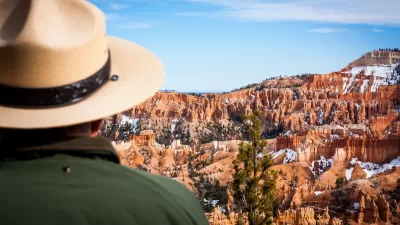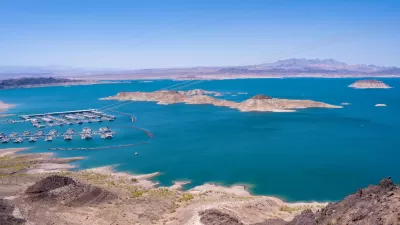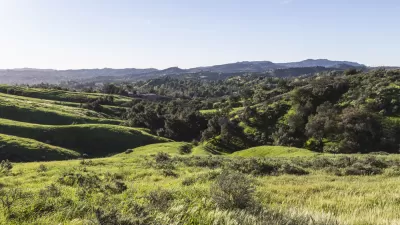A political battle over the Ozark National Scenic Riverways—the largest federal park in Missouri—is heating up. The debate pressures a crucial distinction: how much are protected open spaces for people, and how much are they for protecting.
The federal government recently ended public comment for the long-range management plan for the Ozark National Scenic Riverways, home to the Current and Jacks Fork rivers and located just three hours southwest of St. Louis. The park's 134 miles of spring-fed river and 80,000 acres of wilderness is a popular destination for outdoor enthusiasts.
Todd C. Frankel reports on the two sides in the debate. "The problem is that some residents living near the rivers believe any new restrictions would hurt tourism and restrict the water access they’ve enjoyed for generations," reports Frankel. That side has the political support of U.S. Rep. Jason Smith, R-Salem, who opposes new restrictions in the federal park, which runs through his district.
On the other side: "environmental and conservation groups, plus some people who live farther away and use the rivers for recreation, believe tighter rules are needed to protect the waterways from degradation." In fact, "[three] years ago, the advocacy group American Rivers listed the Ozark waterways among the nation’s 10 most endangered rivers."
The National Park Service has already announced its preference for new restrictions on motorboats, horseback riders and ATVs. Rep. Smith has responded by introducing two bills in the House, including one that would transfer the park back to state control.
FULL STORY: Fight over Ozark rivers isn't waiting for park service's decision

Planetizen Federal Action Tracker
A weekly monitor of how Trump’s orders and actions are impacting planners and planning in America.

Congressman Proposes Bill to Rename DC Metro “Trump Train”
The Make Autorail Great Again Act would withhold federal funding to the system until the Washington Metropolitan Area Transit Authority (WMATA), rebrands as the Washington Metropolitan Authority for Greater Access (WMAGA).

The Simple Legislative Tool Transforming Vacant Downtowns
In California, Michigan and Georgia, an easy win is bringing dollars — and delight — back to city centers.

The States Losing Rural Delivery Rooms at an Alarming Pace
In some states, as few as 9% of rural hospitals still deliver babies. As a result, rising pre-term births, no adequate pre-term care and "harrowing" close calls are a growing reality.

The Small South Asian Republic Going all in on EVs
Thanks to one simple policy change less than five years ago, 65% of new cars in this Himalayan country are now electric.

DC Backpedals on Bike Lane Protection, Swaps Barriers for Paint
Citing aesthetic concerns, the city is removing the concrete barriers and flexposts that once separated Arizona Avenue cyclists from motor vehicles.
Urban Design for Planners 1: Software Tools
This six-course series explores essential urban design concepts using open source software and equips planners with the tools they need to participate fully in the urban design process.
Planning for Universal Design
Learn the tools for implementing Universal Design in planning regulations.
Smith Gee Studio
City of Charlotte
City of Camden Redevelopment Agency
City of Astoria
Transportation Research & Education Center (TREC) at Portland State University
US High Speed Rail Association
City of Camden Redevelopment Agency
Municipality of Princeton (NJ)





























